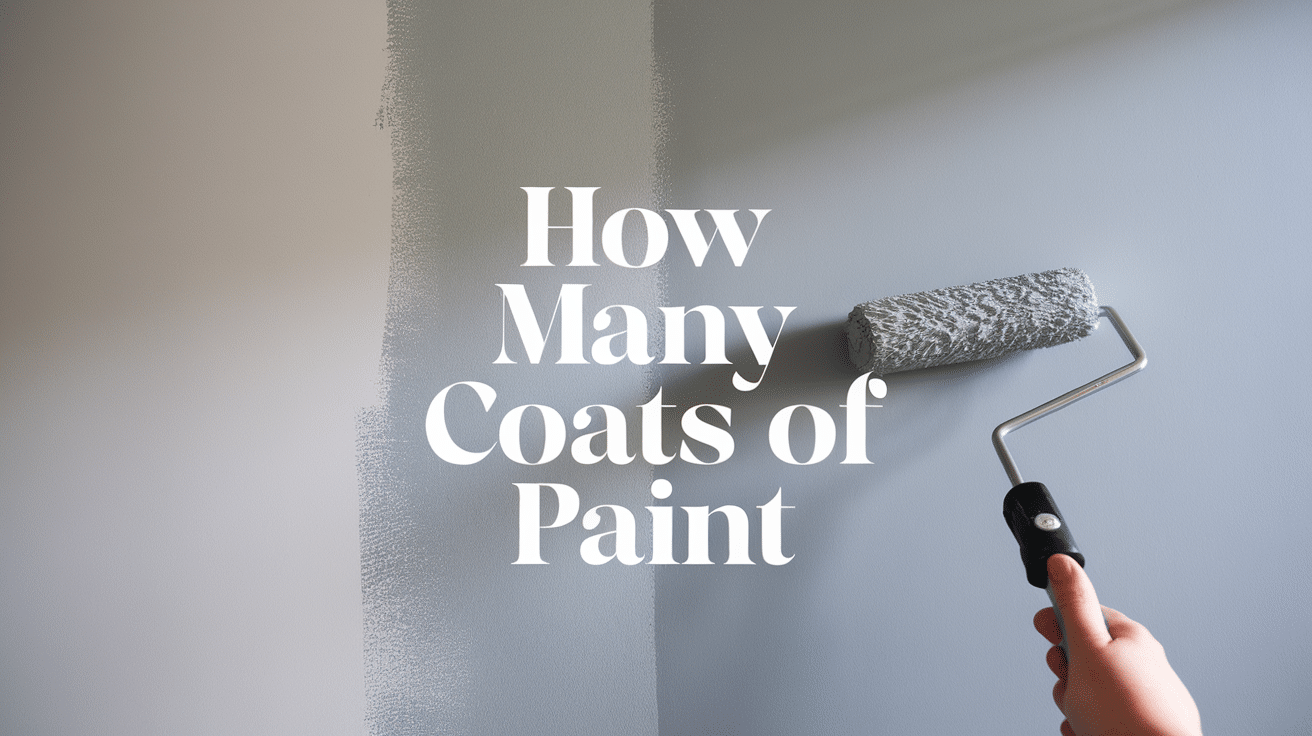When starting a paint project, one common question comes up: How many coats of paint do I need? It sounds simple, but the answer can change depending on what you’re painting and the type of paint you’re using.
The number of coats is important. It affects how smooth the finish looks and how well the paint holds up over time. Too few coats can leave streaks or spots showing through, and too many can waste paint, time, and money.
In this post, I’ll give you a clear starting point—how many coats most projects need. Then we’ll look at what can change that number, like the kind of surface, the color you’re covering, and the type of paint you choose.
By the end, you’ll have a better idea of what your project needs. With the right number of coats, your walls will look clean, even, and built to last.
How Many Coats of Paint Do You Need?
In most cases, you’ll need two coats of paint. Most painting jobs require two coats. This helps the color look even and smooth and extends the paint’s life on the wall or surface.
Some people think one coat is enough, and in some cases, that’s true. If the wall already has a similar color and is in good shape, one coat might work. But it’s not always the best choice for every project.
You may get by with one coat if:
- The wall is already painted in a close shade
- You’re using a paint-and-primer combo
- The surface is smooth and doesn’t have stains or marks
- You’re not changing the color much
But in most cases, two coats give better results. They make the paint look richer, help cover old colors or patches, and provide better protection against wear and tear.
Two coats are usually better for:
- Hiding dark or bold colors underneath
- Creating even coverage with fewer streaks
- Helping paint stick and staying fresh longer
If you want your paint job to last and look clean, go with two coats. It takes more time, but the finish is much better.
When One Coat Might Be Enough?
In some cases, one coat of paint can do the job. It depends on what you’re painting and the paint you use. If the surface is smooth and the color isn’t changing much, one coat may work well.
This approach can save time and money, but it only works when everything lines up just right. Make sure the wall is clean, dry, and in good shape.
You might only need one coat if:
- You’re using premium paint over a similar shade
- The area is small and doesn’t get much traffic
- The surface was primed well and has few or no flaws
- The old paint is still in good shape and not peeling
One coat can work, but it’s not always the best idea for bigger or more visible areas. Always check the surface before deciding.
When You’ll Need Two or More Coats?
Some surfaces need more than one coat to get a strong, even look. This is common with rough areas, bold colors, or big changes in shade. In these cases, extra coats help the paint last and look better.
1. New Drywall
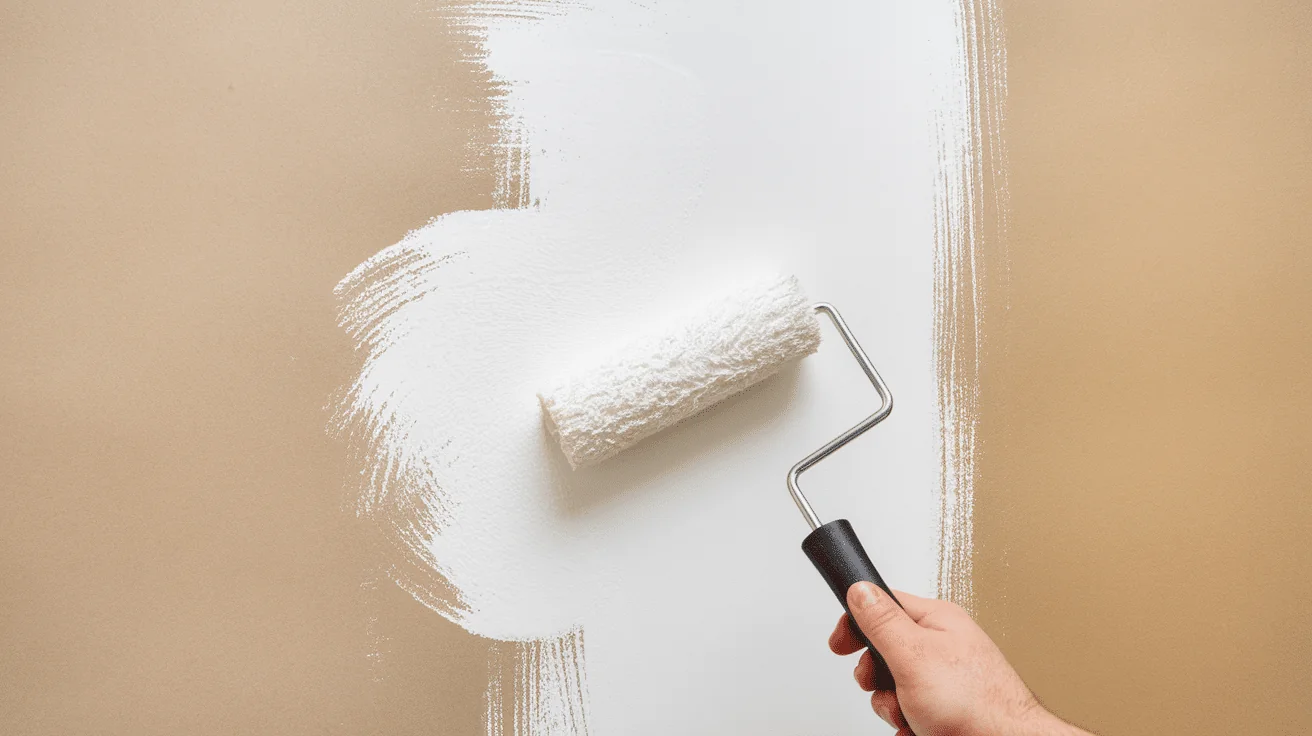
Fresh drywall soaks up paint fast. That’s why it needs a primer first, followed by two coats of paint. Without primer, the surface may look patchy or dull.
Using primer prevents the paint from soaking in too deep. It also helps the color stick and spread better, giving you a smooth finish that holds up over time.
Don’t skip steps with drywall. It may take longer, but the results are worth it. Two coats give better coverage and save touch-ups later.
2. Dark-to-Light Color Changes
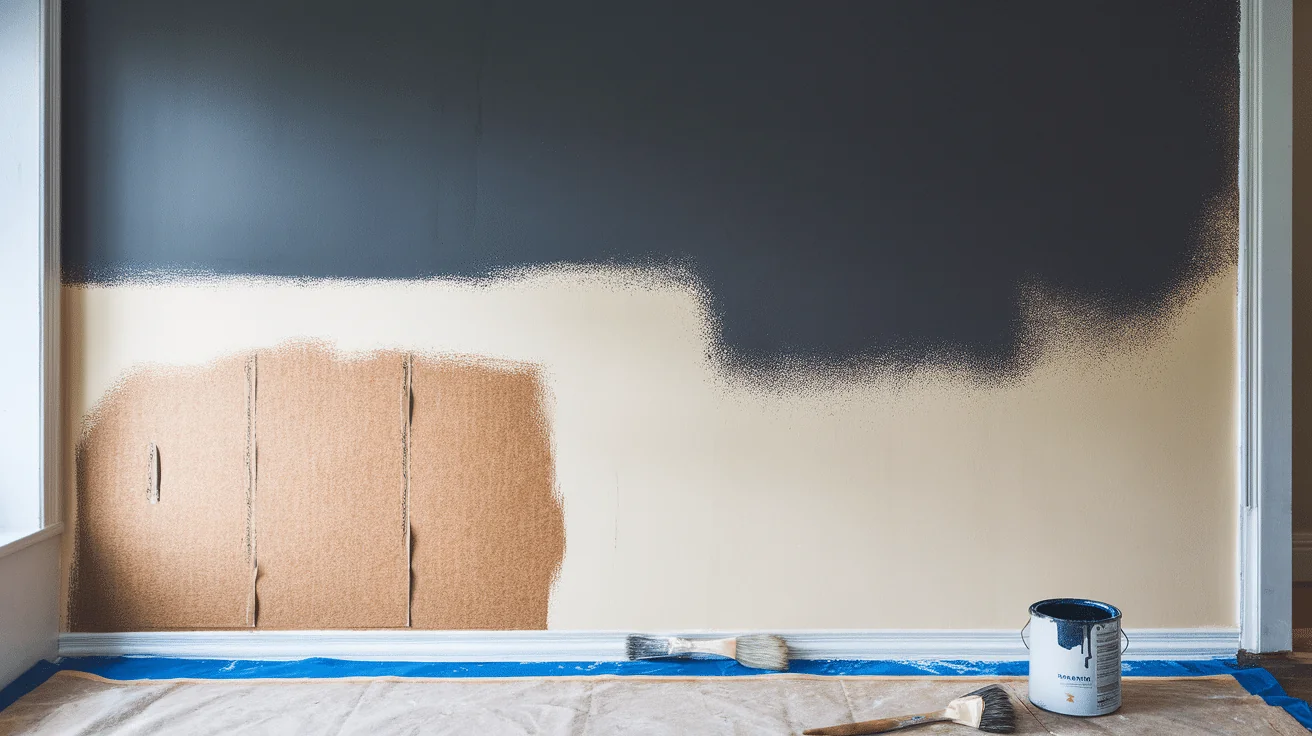
If you’re painting over a dark color with a lighter one, you’ll need more than one coat. The first layer often shows streaks or leftover color underneath, but a second or third coat helps block it out fully.
A primer can help reduce the number of coats needed. But sometimes, even with primer, two paint layers are still best. That’s the only way to get a clean, bright finish.
Take your time between coats. Let each one dry so the next can stick properly. This helps the paint look smooth and last longer.
3. Bold or Unfinished Surfaces
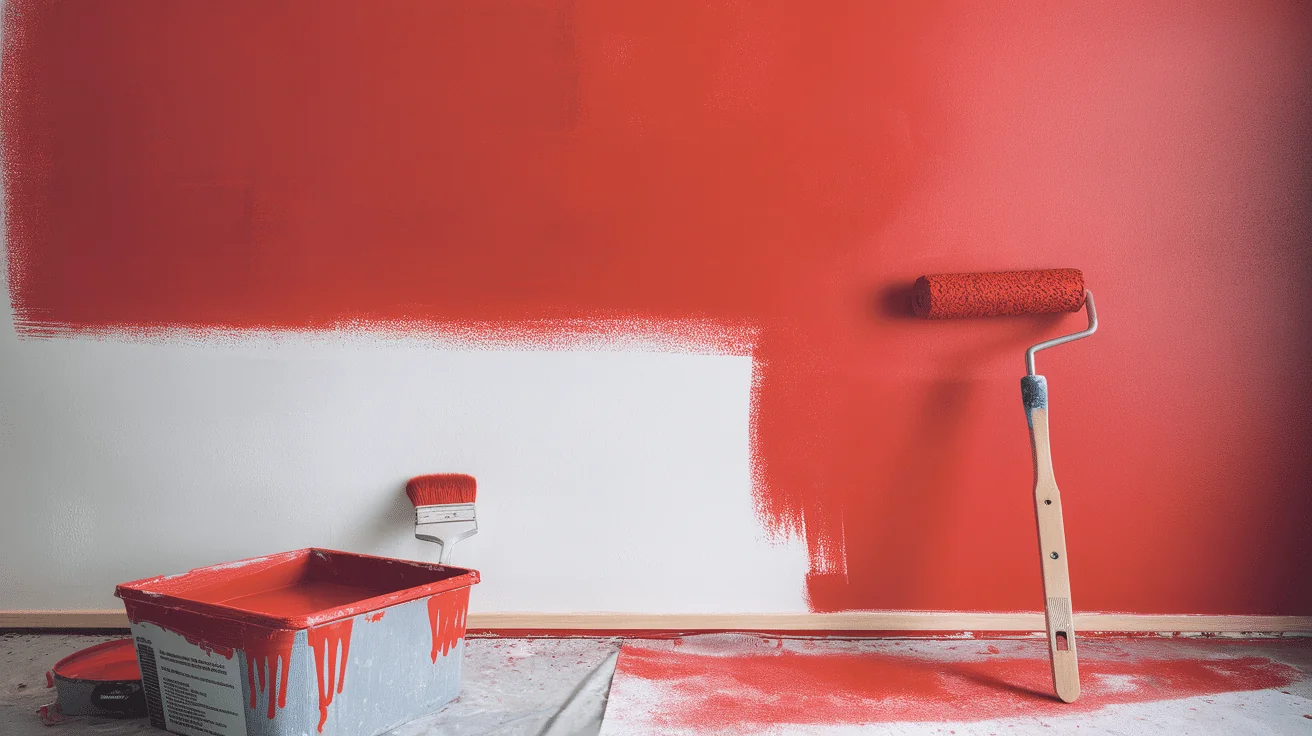
Strong colors like red, navy, or yellow often need extra layers. One coat won’t bring out the full color, and it might look uneven. Two or more coats make the color pop and look right.
Bare wood or metal also takes more effort. These materials need primer and then paint to stop peeling and stains. Skipping the primer can lead to poor results.
Patchy walls or old paint may also need extra coats. The new paint helps cover damage and even things out, and more layers help make the whole wall look clean again.
4. Unfinished Surfaces (bare Wood or Metal)
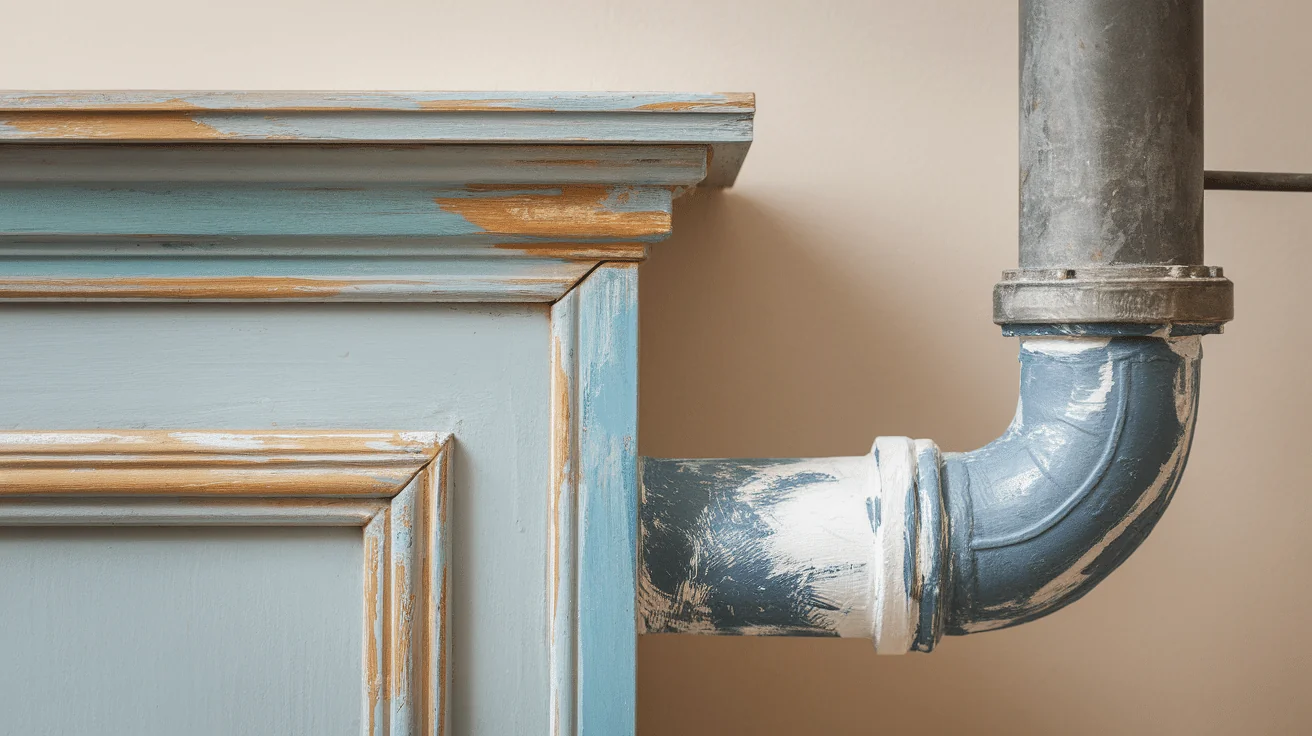
Surfaces like bare wood or metal always need extra attention. These materials soak up paint quickly and may not hold color well, so primer and more than one coat are usually needed.
For bare wood, primer prevents knots and grain from showing through. It also helps paint stick and prevents peeling. Two coats of paint add protection and a smoother look.
If left bare, metal can rust or stain. Using the right primer first helps prevent these problems. After that, two top coats will give a strong finish.
5. Patchy or Uneven Surfaces
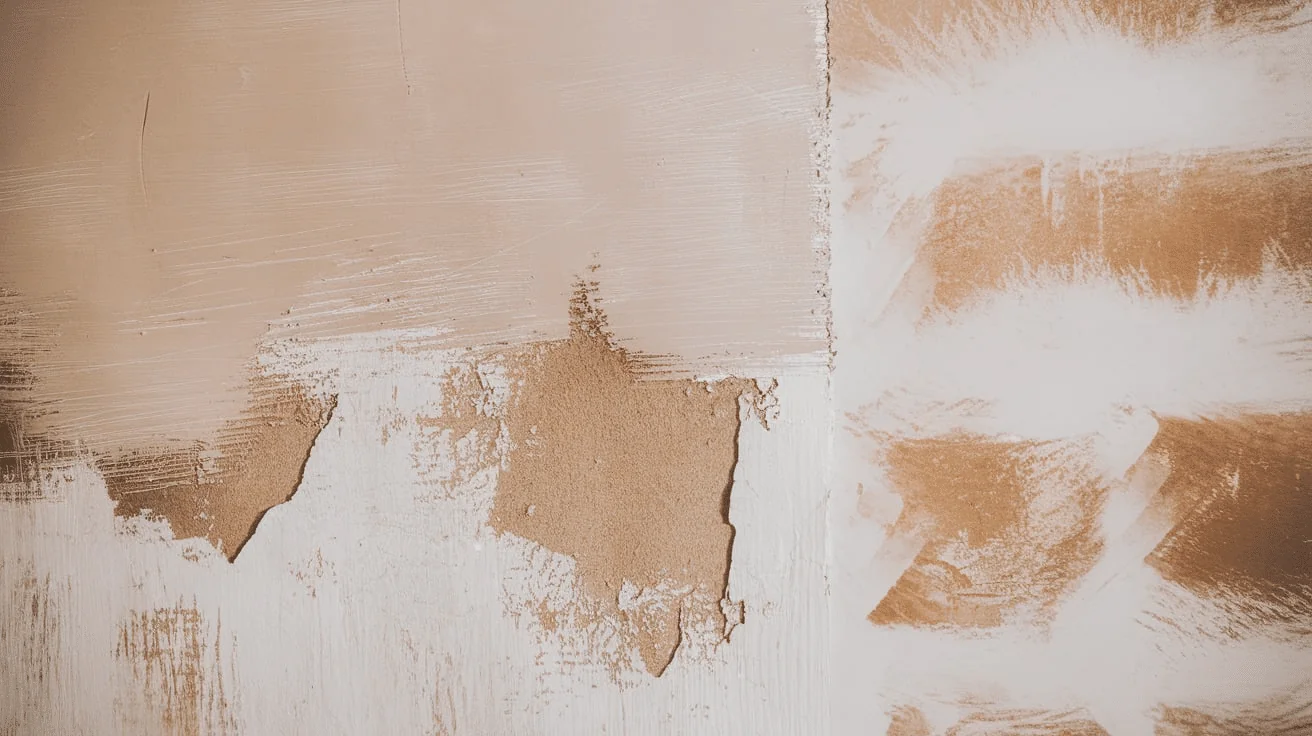
Walls with patches, stains, or old paint need more work. One coat will not hide marks or cover rough areas, but two or more coats help even things out.
Start by fixing holes or cracks with filler or spackle. Sand the surface to smooth it out before painting. Then use primer to block stains and seal repairs.
More coats help hide what’s underneath and make the wall look clean. This makes a big difference in older homes or rooms with wear. The result is a fresh, even surface that lasts.
Surface Matters: What Are You Painting?
Different surfaces need different amounts of paint. Some soak up more, while others already have a base that helps. Knowing the type of surface enables you to choose how many coats to use.
1. Drywall
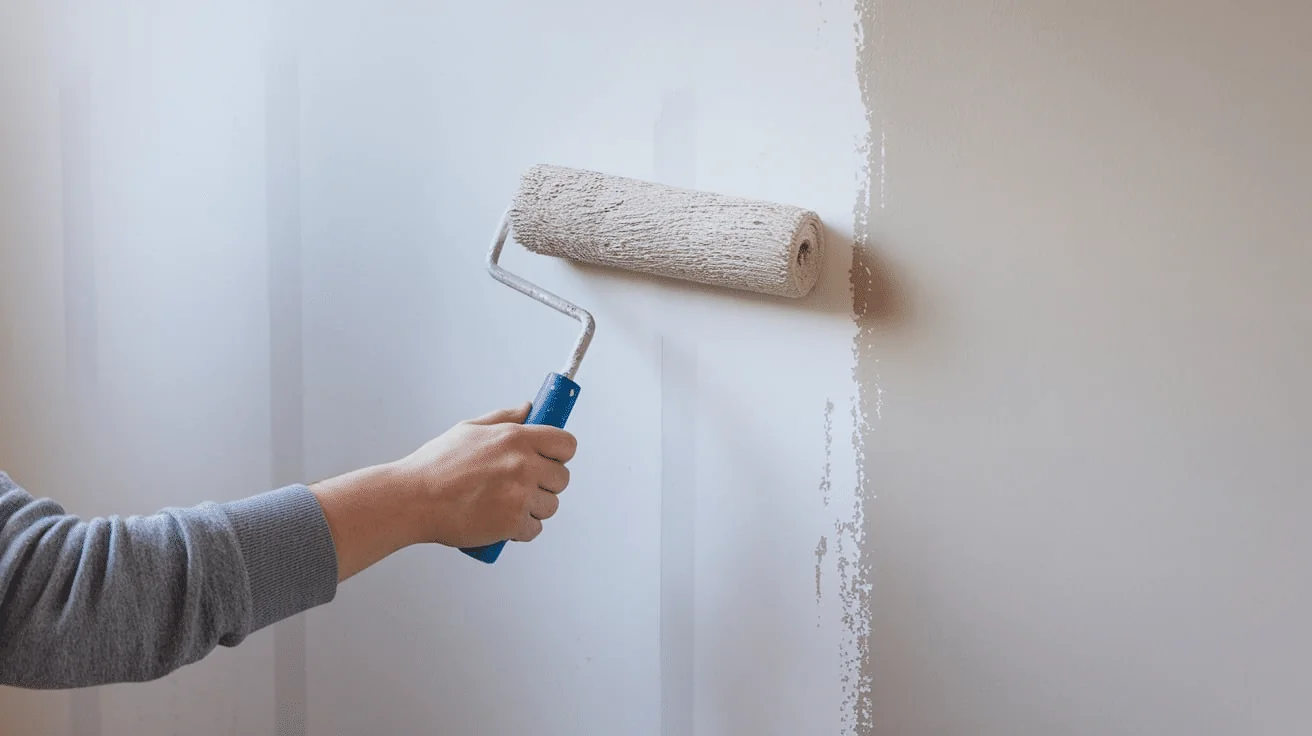
Fresh drywall needs more preparation than other surfaces. It soaks up paint fast, so you always need to start with a primer. Without it, the paint won’t stick or cover well.
After priming, add two coats of paint. This helps the color look even and last longer. Skipping a coat can leave your wall looking patchy or dry.
Take your time between each coat. Let it dry fully before adding the next layer. This gives the paint a smooth and solid finish.
2. Previously Painted Walls
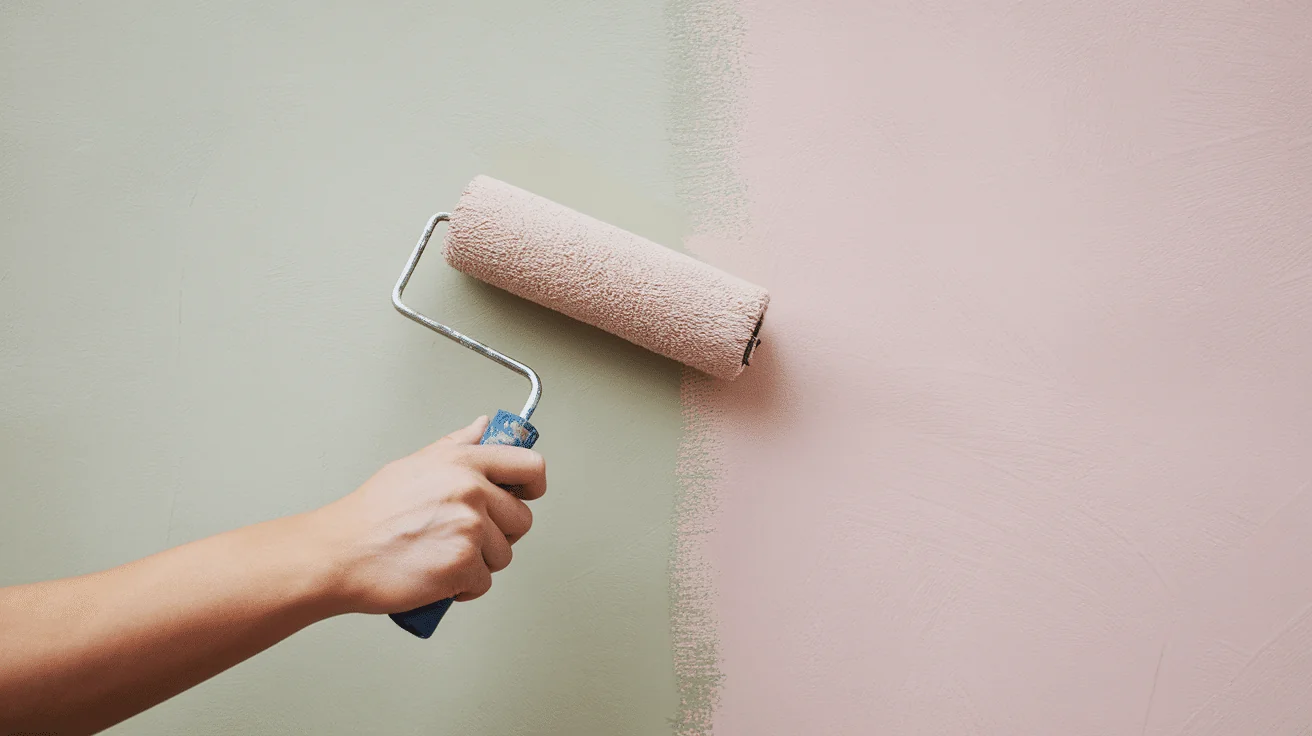
If the wall is already painted, you may not need as many coats. One coat can work if the new color is close to the old one. Just make sure the old paint is clean and not peeling.
If you’re switching to a much lighter or darker color, two coats are safer. This helps cover the old paint and brings out the new shade. It also hides marks or small flaws.
Check the surface before painting. Wipe it down and fix any dents or holes. A clean, smooth wall helps the paint do its job.
3. Trim and Doors
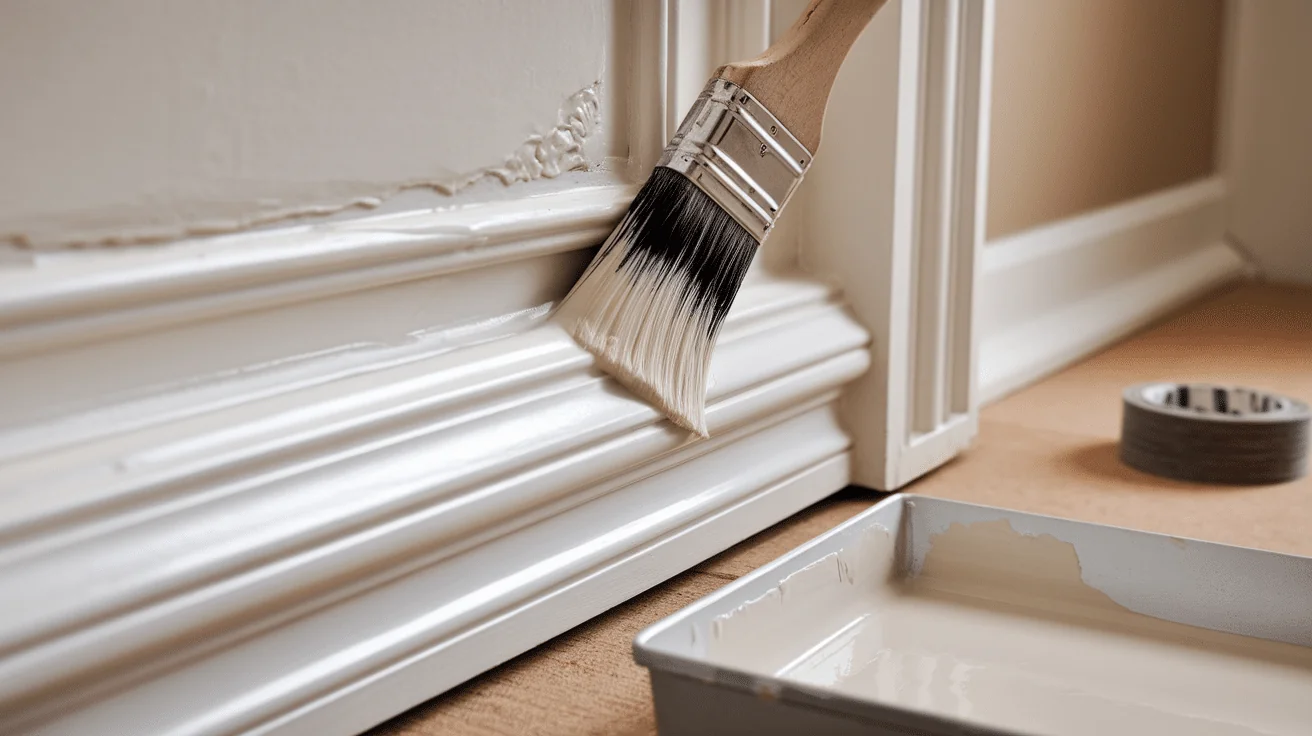
Trim and doors get touched a lot, so they need tough paint. One thick coat might peel, so it’s better to use two or three thin ones. That way, the paint sticks better and lasts longer.
Use a brush for small areas and corners. Keep your strokes smooth to avoid lines or drips. Let each coat dry before adding the next.
These areas often show flaws more easily. Taking your time gives the best results. The extra effort is worth it for a clean look.
4. Ceilings
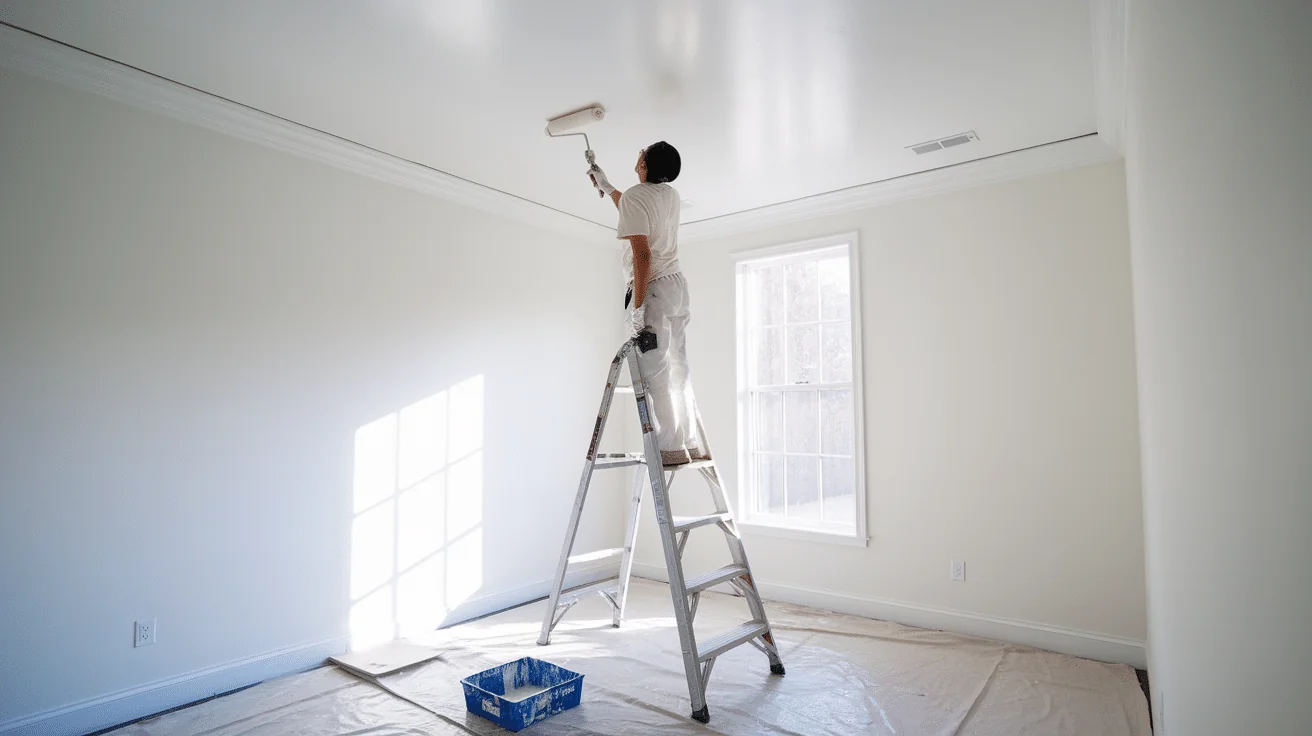
Ceilings don’t get much wear, so they usually need less paint. One coat of flat ceiling paint is often enough. It covers well and hides small marks or shadows.
If the ceiling is stained or dark, use a primer first. Then, follow with a coat of ceiling paint. This helps cover spots and brightens the space.
Paint the ceiling last to avoid drips on your walls or trim. Use a roller for smooth and even coverage. One coat is usually plenty unless the surface is damaged.
Color Matters Too
The color you choose plays a big role in how many coats you need. Some colors are easier to cover, while others take more time. Knowing this helps you plan and avoid surprise work.
1. Going Light Over Dark
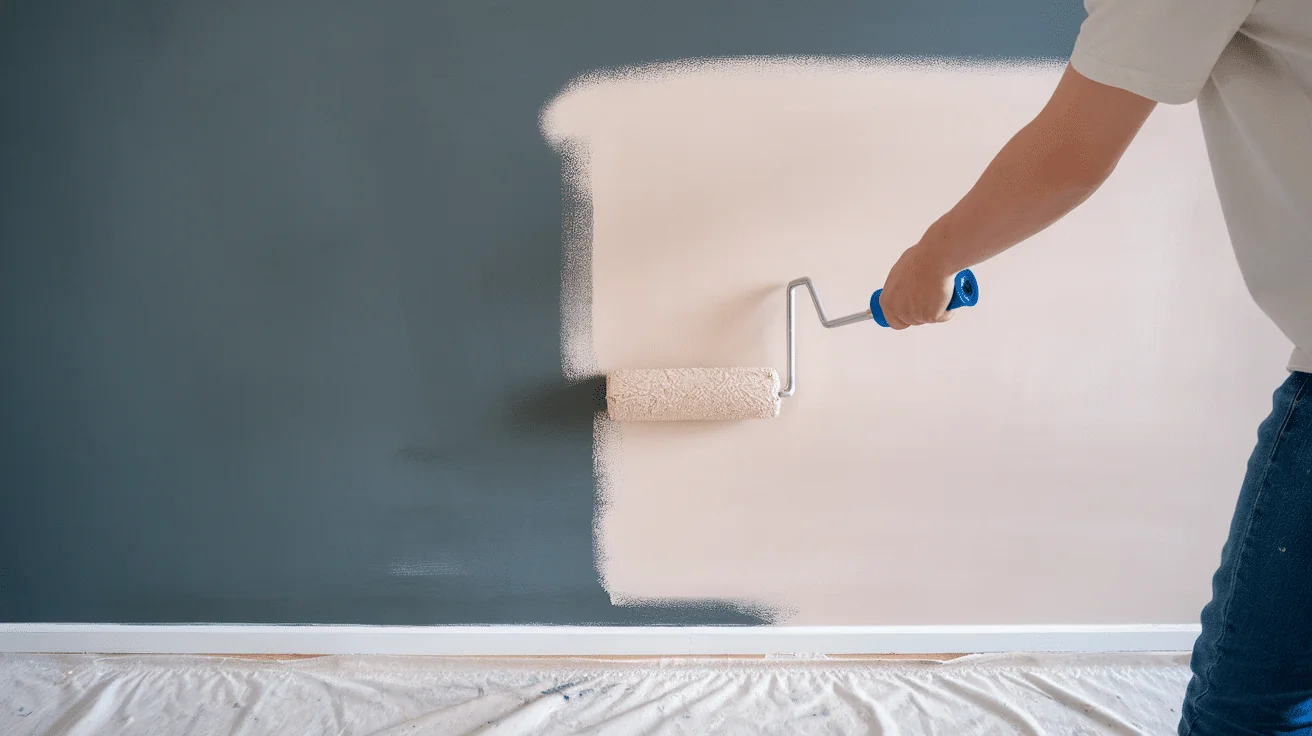
Painting a light color over a dark one is tough. The dark shade can show through and make the new color look weak. This usually means you’ll need at least two coats, sometimes three.
Using a primer can help block the dark color. It gives your paint a clean base and helps reduce streaks. Primer also makes the top color look brighter and more even.
Always check after the first coat. If the old color is still peeking through, add another layer. It’s better to build slowly for a smooth look.
2. Going Dark Over Light
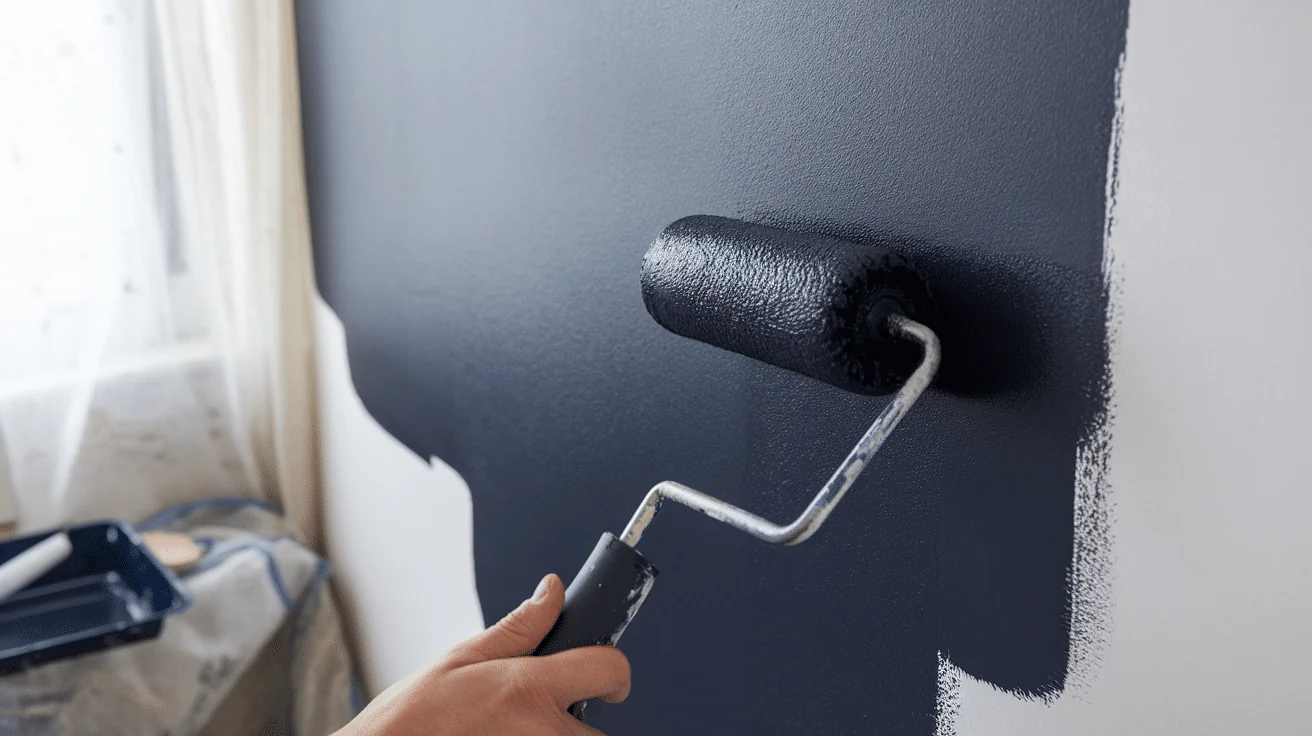
Darker colors might cover a light wall more easily. But to get a deep, rich finish, you’ll still need at least two coats. The first coat often looks thin or streaky.
Each extra coat makes the color look fuller. It helps bring out the depth and feel of bold tones. Skipping coats may leave the color looking flat or uneven.
Use a roller made for smooth walls. It helps spread the paint evenly without leaving marks. Clean lines and solid color make a big difference.
3. Bold Shades
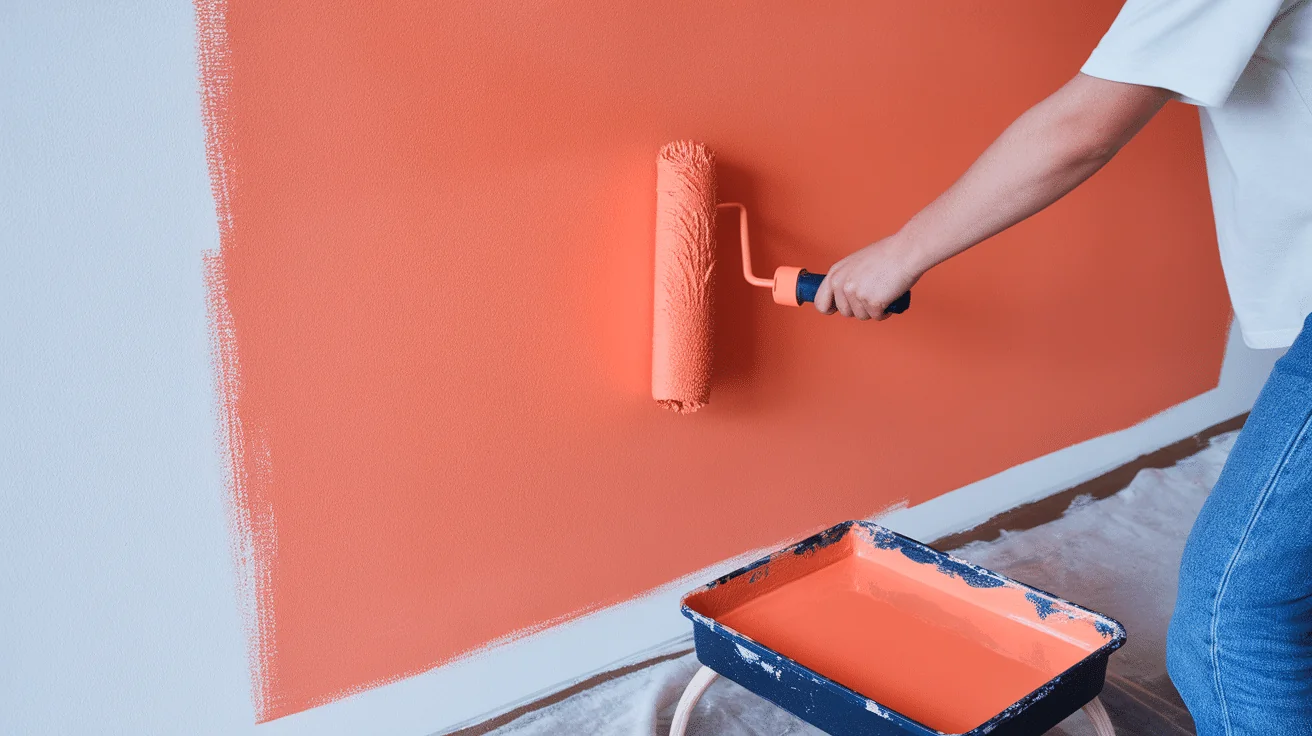
Bright colors like red, orange, and green are harder to paint. These shades often need more coats to look even and bold, and one layer will usually look thin or patchy.
Using a tinted primer can help. It adds a colored base that makes the bold shade cover better, reducing the number of coats of paint you’ll need.
Always use good lighting when painting with bright colors. It helps you spot missed spots or thin patches. More coats bring out the full color and keep it looking fresh.
Importance of Primer
Primer is the first step before painting, and it makes a big difference. It helps paint stick better, look smoother, and last longer.
When you paint without primer, the surface might soak up the paint unevenly, leading to streaks or dull spots. Primer gives you a clean, sealed base to start with.
You should always use primer if:
- You’re painting over bare drywall, wood, or metal
- You need to cover stains, smoke, or water marks
- You’re going from a dark color to a light one
Primer also helps reduce the number of paint coats you’ll need. It blocks stains and keeps them from bleeding through. It also makes bold colors look more solid.
Using a primer may feel like an extra step, but it saves time in the long run. It helps you get a cleaner, stronger finish with less effort.
Paint Quality and Tools
The paint you choose makes a big difference. High-quality paint gives better coverage, so you need fewer coats. The right tools also help your work look neat and go faster.
Cheaper paint may seem like a way to save money, but it often leads to more work. You might need extra coats, and the finish might not look as smooth. Over time, low-quality paint can chip or fade more easily.
Better paint spreads evenly and sticks well to the surface. It hides flaws better and lasts longer. Spending a little more upfront can save time and effort later.
Good brushes and rollers help the paint go on smoother. They don’t leave lines or clumps behind. Clean, sturdy tools make your results look more professional.
How to Know If You Need Another Coat?
It’s not always clear when you need another coat of paint. But a few signs can help you decide before the paint fully dries. Watching for these signs can save time and give you a better finish.
If you still see streaks or light spots, you probably need another coat. This means the paint didn’t cover the surface evenly. Let it dry fully, then add another layer for a solid color.
If the old color shows through, one coat wasn’t enough. This is common when switching from dark to light shades. A second coat helps block the old color and brighten the new one.
If the paint looks dull in some areas and smooth in others, it needs more coverage. An uneven finish can make the wall look blotchy. A second coat evens things out and makes the color look solid.
If you notice brush marks, roller lines, or texture you don’t like, another coat can help smooth it. Always let the first coat dry fully before repainting. This gives you the best chance at a clean, even finish.
Painting Tips to Avoid Extra Work
Taking your time before and during painting can help you avoid extra coats later. Good prep and the right tools make a big difference. These small steps can save you time, money, and effort in the long run.
Helpful painting tips:
- Use a primer if the surface is bare, stained, or a big color change
- Let each coat dry fully before adding the next one
- Clean, sand, and tape off areas before painting
- Choose brushes and rollers made for the surface you’re working on
- Avoid overloading your brush or roller with paint
- Work in even strokes for better coverage
Conclusion
Most paint jobs need two coats. This helps you get strong, even coverage that lasts longer. One coat might seem quicker, but it doesn’t always do the job well.
In some cases, one coat can work. If the old and new colors are close or the surface is smooth and clean, one layer might be enough. Still, it’s a good idea to test first.
Don’t skip steps just to save time. Cleaning the surface and using primer can make a big difference. These steps help the paint stick better and last longer.
Always read the directions on the paint can. Think about the surface, the color change, and the finish you want. Each one plays a part.
Use good tools, take your time, and follow each step. That’s the best way to get a smooth, strong paint job that holds up well.

